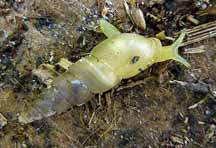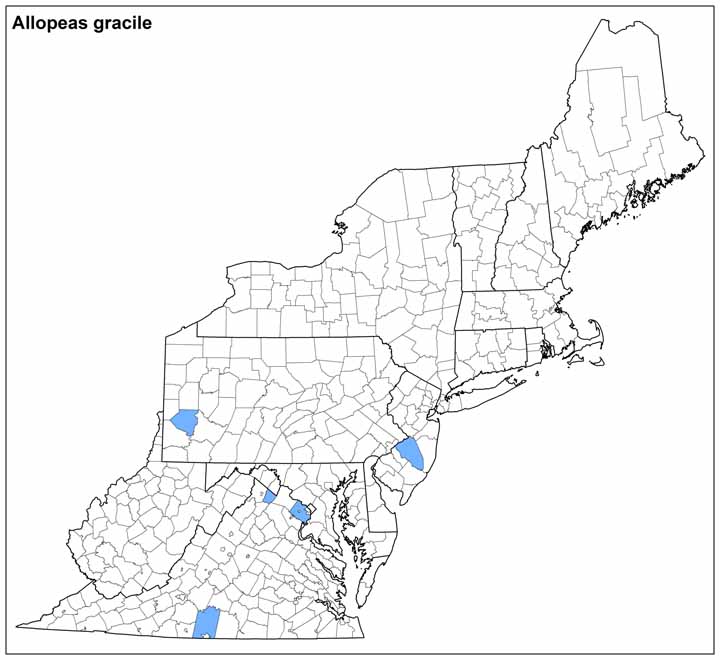Land Snails


Photos: Allopeas gracile, note the eggs visible through some of the translucent shells. Images © Bill Frank
Allopeas gracile (Hutton, 1834) (non-native)
Family: Subulinidae
Common name: Graceful Awlsnail
Identification
Width: ~3 mm
Height: ~7-12 mm
Whorls: 7-9
The shell of Allopeas gracile is elongate, glossy and translucent. The lip is simple. The live animal is yellowish. Compared with Subulina octona this species is smaller and does not have a truncated shell tip (White-Mclean, 2011).
Ecology
This tropical species is omnivorous, consuming fresh vegetation, fungi, and dead insects and worms in a laboratory experiment (Capinera, 2017). It may feed on various vegetable or flower crops (Romaine lettuce was a favorite), but is not usually a major agricultural pest.
This snail can reproduce sexually or asexually. Snails reached maturity at 50-60 days (Capinera, 2017). Adult snails laid eggs in groups of 3-5, up to 1 cm deep. Allopeas gracileaveraged 153 eggs in their lifetime. Eggs matured faster in warmer temperatures, varying from 19 days to 8 days.
Taxonomy
Allopeas gracile has also been called Bulimus gracilis, B. oparanus, B. junceus, and Stenogyra upolensis (White-McLean, 2011).
Distribution
Widespread in the subtropics globally, including Southeast Asia, Dominica, West Indies, Hawaiia, Central and South America (Robinson et al., 2009; White-McLean, 2011). In the Northeast there are scattered reports from New Jersey and Pennsylvania south.
Conservation
NatureServe Explorer rank: G5, Secure.
Ken Hotopp 11/2017
Range Map (click to enlarge)



